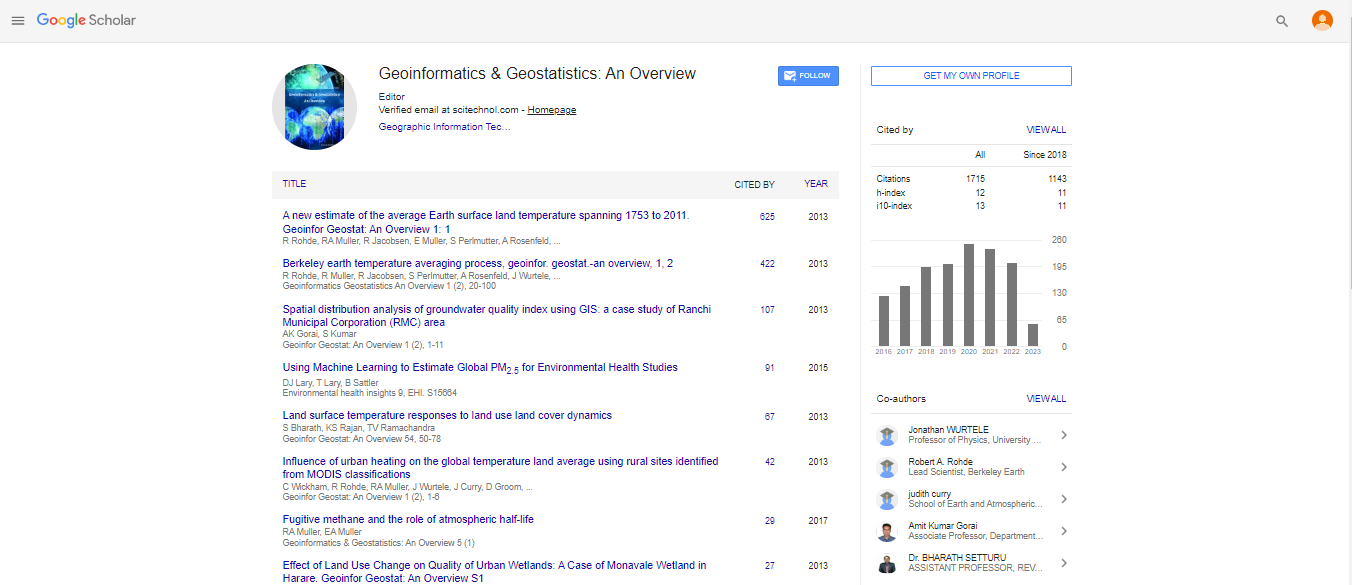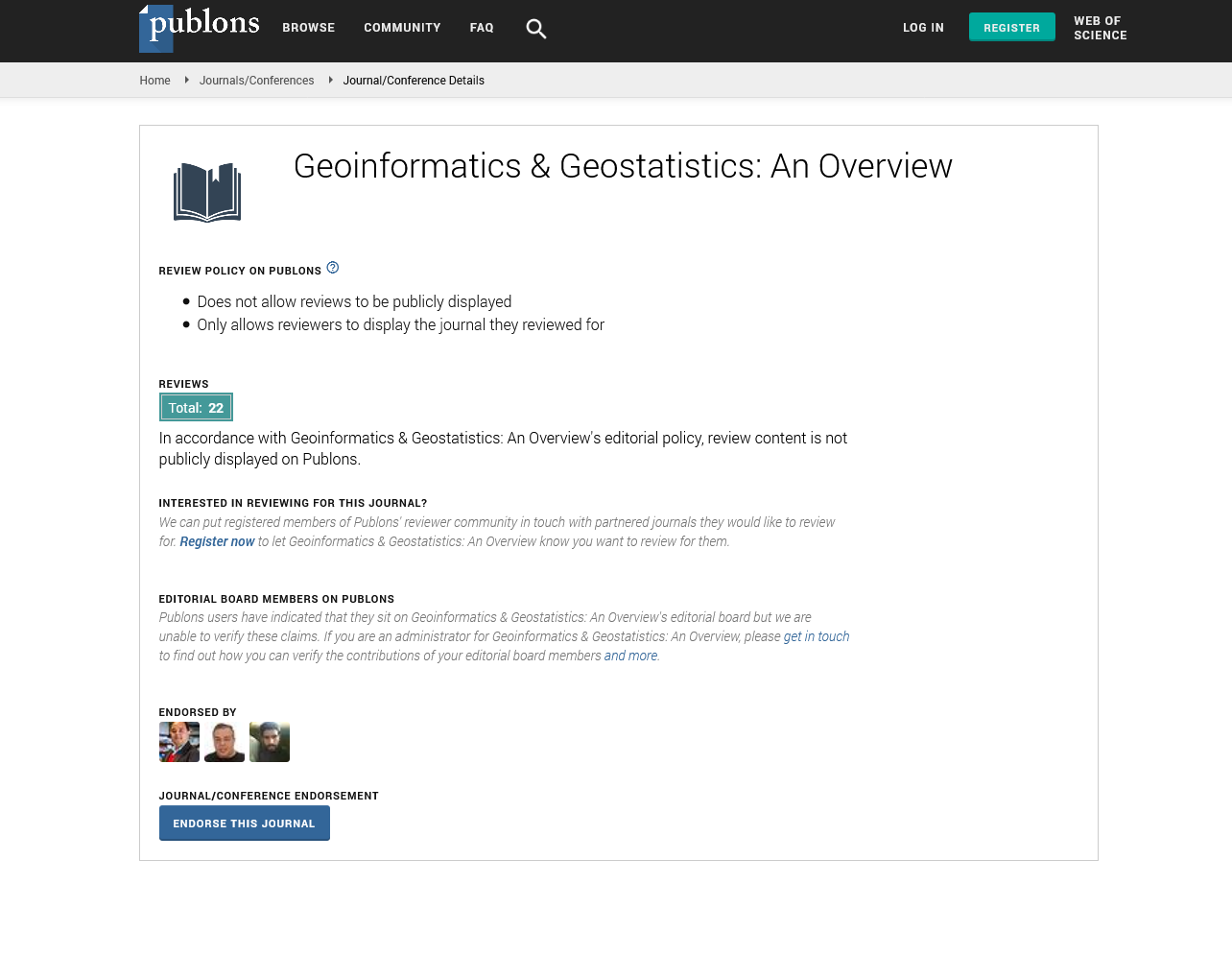Opinion Article, Geoinfor Geostat An Overview Vol: 13 Issue: 1
Eruption Mass Estimation in Volcanology: Methodological Advances and Real Applications
Daniel Heutsch*
Department of Archaeology and Heritage Studies, Aarhus University, Aarhus, Denmark
*Corresponding Author: Daniel Heutsch
Department of Archaeology and Heritage
Studies, Aarhus University, Aarhus, Denmark; E-mail: Danh56@cas.asu.dk
Received date: 30 December, 2024, Manuscript No. GIGS-25-164064;
Editor assigned date: 02 January, 2025, PreQC No. GIGS-25-164064(PQ);
Reviewed date: 16 January, 2025, QC No. GIGS-25-164064;
Revised date: 23 January, 2025, Manuscript No. GIGS-25-164064(R);
Published date: 30 January, 2025, DOI:10.4172/2327-4581.1000431.
Citation: Heutsch D (2025) Eruption Mass Estimation in Volcanology: Methodological Advances and Real Applications. Geoinfor Geostat: An Overview 13:1.
Abstract
Description
Estimating the mass of volcanic eruptions is important for understanding eruption dynamics, assessing hazards and improving volcanic risk mitigation strategies. The total erupted mass influences the dispersal of tephra, the impact on climate and the risk to nearby populations and infrastructure. This paper provides an overview of current methods used for eruption mass estimation, discusses the associated uncertainties and challenges and explores the application of remote sensing and geospatial tools in refining eruption mass calculations.
Volcanic eruptions release vast quantities of solid and gaseous materials into the atmosphere and surrounding environment. Accurately quantifying the eruption mass is essential for evaluating eruption magnitude, forecasting future activity and understanding environmental impacts such as ash fallout and atmospheric pollution. Eruption mass estimation is typically expressed in terms of Total Erupted Mass (TEM) or Dense Rock Equivalent (DRE), with methods varying based on eruption type, available data and observational constraints.
Methods of eruption mass estimation
Eruption mass can be estimated through direct and indirect methods, including field measurements, remote sensing and numerical modeling. The selection of method depends on eruption scale, accessibility and the type of materials erupted. One of the most traditional methods involves field-based mapping of tephra deposits. By measuring tephra thickness and density across multiple locations and interpolating between them, scientists construct isopach (thickness) and isomass (mass) maps. These maps are then integrated to estimate the total mass of ejected materials. The widely used Pyle exponential model, along with the Power Law and Weibull distributions, help fit observed data and extrapolate deposit extents beyond observed limits.
Eruption mass estimation is an important aspect of volcanology, as it helps quantify the total amount of material expelled during a volcanic eruption. This includes ash, lava, pyroclastic flows and volcanic gases. Understanding the eruption mass is essential for assessing the magnitude and impact of an eruption, classifying it on the Volcanic Explosivity Index (VEI) and informing hazard assessments and disaster preparedness strategies. Accurate estimation of erupted mass also supports environmental impact analysis, especially in relation to ash dispersal, air quality and climate effects due to volcanic aerosols like sulfur dioxide (SO₂).
Remote sensing approaches
Satellite remote sensing offers near-real-time and large-scale observation capabilities for eruption mass estimation. Instruments such as MODIS, ASTER and Sentinel-5P provide data on volcanic ash cloud height, area and concentration. By combining this data with ash particle density and optical thickness, researchers can estimate ash mass suspended in the atmosphere. Thermal infrared (TIR) and UV sensors also help in detecting SO₂ and ash emissions, which are used as proxies for erupted material volume.
Ground-based monitoring
Ground-based tools such as tephra collectors, radar systems and laser scanning (LiDAR) can provide high-resolution data on particle fallout, volume changes and plume dynamics. These methods, though limited in spatial extent, offer detailed and accurate measurements in monitored regions.
Lava flow volume estimation
For effusive eruptions, lava flow volumes are estimated using Digital Elevation Models (DEMs) before and after eruptions, often derived from satellite or drone-based photogrammetry and LiDAR. By calculating volume change and multiplying by lava rock density, total eruption mass can be derived. This method is particularly effective for long-duration basaltic eruptions.
The integration of GeoAI, machine learning and big data analytics is promising for improving eruption mass estimation. Automated classification of satellite imagery, 3D modeling of ash clouds and predictive modeling of tephra dispersion are areas of active research. Further, Unmanned Aerial Vehicles (UAVs) equipped with multispectral and thermal sensors offer new possibilities for rapid and safe post-eruption mapping. Interdisciplinary collaboration, open data platforms and real-time geospatial data processing will be essential to enhance eruption mass estimation capabilities and reduce uncertainties.
Conclusion
Eruption mass estimation is a fundamental component of volcanic research and risk mitigation. While traditional methods provide valuable insights, modern remote sensing, ground-based technologies and advanced modeling tools are revolutionizing the accuracy and efficiency of mass assessments. As the frequency and impact of volcanic hazards rise with growing populations near active volcanoes, improving eruption mass estimation will remain a high priority for the global scientific and disaster management communities.
 Spanish
Spanish  Chinese
Chinese  Russian
Russian  German
German  French
French  Japanese
Japanese  Portuguese
Portuguese  Hindi
Hindi 
